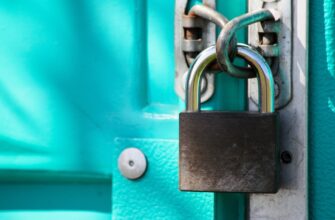- How to Backup Private Key with Password: Ultimate Security Guide
- Why Password-Protected Private Key Backups Are Non-Negotiable
- Step-by-Step: How to Backup Your Private Key with Password
- Best Practices for Ironclad Backup Security
- Critical Mistakes to Avoid When Backing Up Private Keys
- FAQ: Private Key Backup Security Explained
How to Backup Private Key with Password: Ultimate Security Guide
Private keys are the digital equivalent of a physical safe’s combination—lose it, and you permanently lose access to your cryptocurrencies, encrypted files, or secure communications. Backing up your private key with a password adds a critical layer of protection against theft and accidental loss. This 900-word guide walks you through foolproof methods, security best practices, and expert tips to ensure your digital assets remain secure yet recoverable.
Why Password-Protected Private Key Backups Are Non-Negotiable
Private keys grant absolute ownership of blockchain assets (like Bitcoin or Ethereum) and encrypted data. Without a backup, hardware failure, device loss, or accidental deletion means permanent inaccessibility. Adding a password encrypts the backup file, transforming it into a secure vault. Even if someone steals the backup, they can’t use it without cracking your password. This dual-layer approach mitigates two major risks:
- Physical Threats: Theft, damage, or loss of devices storing keys.
- Digital Threats: Malware, hacking, or unauthorized access to cloud storage.
Step-by-Step: How to Backup Your Private Key with Password
Follow this universal process to create an encrypted backup. Always perform these steps offline on a malware-free device.
- Locate Your Private Key: Access it via your wallet software (e.g., MetaMask’s “Export Private Key”) or encryption tool. Never share it openly.
- Encrypt with a Strong Password: Use a tool like GPG (GNU Privacy Guard) or AES Crypt. For example, with GPG:
- Install GPG (Windows/macOS/Linux).
- Run:
gpg -c --cipher-algo AES256 privatekey.txt - Set a 12+ character password (mix upper/lowercase, numbers, symbols).
- Save the Encrypted File: The output (e.g., privatekey.txt.gpg) is your password-protected backup. Delete the original unencrypted key immediately.
- Store Securely in Multiple Locations: Save copies on 2-3 offline mediums:
- USB drives (kept in a fireproof safe)
- Encrypted cloud storage (e.g., Veracrypt container on Dropbox)
- Paper printouts (stored in sealed bags away from moisture)
- Verify & Test Restoration: On a clean device, decrypt the backup using your password to confirm accessibility. Re-encrypt afterward.
Best Practices for Ironclad Backup Security
- Password Strength: Use a unique, complex passphrase (e.g., “Turtle$Jumped!42OverMoon”). Avoid dictionary words or personal info.
- Multi-Location Storage: Follow the 3-2-1 rule: 3 copies, 2 media types, 1 off-site (e.g., bank safety deposit box).
- Regular Updates: Re-backup after changing keys or passwords. Check integrity every 6 months.
- Air-Gapped Devices: Use a dedicated offline computer for key management to block remote attacks.
- Avoid Digital Traces: Never email, message, or screenshot unencrypted keys. Clear browser/cache after online steps.
Critical Mistakes to Avoid When Backing Up Private Keys
- Weak Passwords: “password123” or “abcde” are easily cracked—use a password manager for generation/storage.
- Single Point of Failure: Relying solely on one USB drive or cloud account risks total loss.
- Unverified Backups: Failing to test decryption can lead to unrecoverable data when urgently needed.
- Exposure During Handling: Viewing keys on public networks or infected devices invites interception.
- Neglecting Physical Security: Storing paper backups in easily accessible places defeats the purpose.
FAQ: Private Key Backup Security Explained
Q: Can I use a password manager to store my encrypted private key?
A: Yes, but only if the manager supports file attachments (e.g., 1Password). Store the encrypted file there—never the raw key.
Q: Is cloud storage safe for password-protected private keys?
A: Only if double-encrypted. First, encrypt the key with a password using GPG/AES. Then, place it inside a Veracrypt container before uploading.
Q: How often should I update my private key backup?
A: Immediately after generating a new key or changing your encryption password. Otherwise, verify backups biannually.
Q: What if I forget my backup password?
A: Your key is irrecoverable. Use a password manager or physical password sheet stored separately from backups.
Q: Are hardware wallets a backup solution?
A: No—they store keys securely but can fail. Always extract and password-backup your recovery seed (which generates keys) following this guide.








